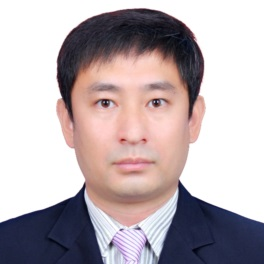Groundwater Hydrology, Contamination, and Sustainable Development
A special issue of Sustainability (ISSN 2071-1050). This special issue belongs to the section "Sustainable Water Management".
Deadline for manuscript submissions: closed (12 January 2024) | Viewed by 9534
Special Issue Editors
Interests: engineering geology; hydrogeology; environmental geology; medical geology; water quality; hydrogeochemistry; health risk assessment; geoinformatics; numerical modelling; artificial intelligence; machine learning
Special Issues, Collections and Topics in MDPI journals
Interests: water resources; hydrogeology; groundwater quality; groundwater pollution; groundwater modeling; health risk assessment; geochemical modeling; hyrogeochemistry
Special Issues, Collections and Topics in MDPI journals
Interests: environmental chemistry; analytical chemistry; chemometrics; environmental radioactivity; chromatographic techniques; environmental pollution; physical chemistry
Special Issues, Collections and Topics in MDPI journals
Special Issue Information
Dear Colleagues,
The need for all humans to have access to clean water is paramount and forms a critical aspect of daily life. This was enshrined as part of the Sustainable Development Goals (SDGs). In view of this, researchers have been monitoring and assessing groundwater occurrence and distribution, groundwater quality and groundwater vulnerability, and developing innovative ways of solving groundwater pollution challenges. Several technological- and mathematical-based techniques can be used to conduct groundwater research. Intelligent systems are also reliable tools that can be employed. For decades, various geospatial (remote sensing and geographic information system (GIS)), artificial intelligence (AI), machine learning (ML), statistical, and indexical methods have been proposed and applied by numerous researchers in the field of hydrogeology and environmental water quality. Most of the previous research outputs uphold that these methods have been very useful in interpreting groundwater hydrology and groundwater quality data. The application of integrated methods for groundwater hydrology, environmental contamination and water quality research is of the utmost significance when actualizing many environmental sustainability goals.
This Special Issue, “Groundwater Hydrology, Contamination, and Sustainable Development”, aims to provide a collection of innovative, original research papers, case studies, and review papers that addresses a wide-range of issues on the hydrology, contamination, and sustainable development of groundwater. This Special Issue will also provide insights into the sustainable development of rural and urban water environments. Up-to-date recent developments on the topic and perspectives for future research will be covered.
A wide-range of article types related to the listed themes will be considered in this Special Issue. The research themes covered in this Special Issue include, but are not limited to:
- Environmental groundwater quality issues in developing/developed and arid/semiarid regions.
- Groundwater mapping for sustainable water resources’ development.
- Integration of intelligent systems for modelling groundwater quality and pollutant transport.
- Application of AI and ML techniques in modelling emerging contaminants in groundwater.
- Application of remote sensing and GIS for sustainable groundwater development and management.
- Development of hybrid machine learning algorithms for water quality assessment.
- Novel statistical techniques for drinking, industrial, and irrigation water quality assessment.
- Climate change and its impacts on groundwater hydrology and quality.
- Impact of COVID-19 on groundwater hydrology and quality.
- Hydrometeorological parameters as they affect groundwater occurrence and distribution.
- Characterization of aquifer parameters for sustainable groundwater development.
- Hydrogeochemical investigation of groundwater resources as relates to sustainable development.
- Impact of anthropogenic activities on groundwater hydrology and quality.
- Water scarcity in developing regions and insights for sustainable groundwater development.
- Integrated modelling techniques applied for sustainable groundwater management.
- Groundwater interconnections with surface hydrology.
- Hydrological cycle, hydrogeological systems and natural water protection.
- Emerging contaminants as threats to sustainable groundwater development.
- Groundwater vulnerability mapping for sustainable rural/urban development.
- Groundwater pollution and source apportionment for sustainable mitigation planning.
- Human health risk assessment of contaminated groundwater.
- Novel groundwater pollution indexing for sustainable groundwater management.
- Remediation and treatment methods for contaminated/polluted groundwater systems.
Dr. Johnbosco C. Egbueri
Prof. Dr. Peiyue Li
Prof. Dr. Antonije Onjia
Guest Editors
Manuscript Submission Information
Manuscripts should be submitted online at www.mdpi.com by registering and logging in to this website. Once you are registered, click here to go to the submission form. Manuscripts can be submitted until the deadline. All submissions that pass pre-check are peer-reviewed. Accepted papers will be published continuously in the journal (as soon as accepted) and will be listed together on the special issue website. Research articles, review articles as well as short communications are invited. For planned papers, a title and short abstract (about 100 words) can be sent to the Editorial Office for announcement on this website.
Submitted manuscripts should not have been published previously, nor be under consideration for publication elsewhere (except conference proceedings papers). All manuscripts are thoroughly refereed through a single-blind peer-review process. A guide for authors and other relevant information for submission of manuscripts is available on the Instructions for Authors page. Sustainability is an international peer-reviewed open access semimonthly journal published by MDPI.
Please visit the Instructions for Authors page before submitting a manuscript. The Article Processing Charge (APC) for publication in this open access journal is 2400 CHF (Swiss Francs). Submitted papers should be well formatted and use good English. Authors may use MDPI's English editing service prior to publication or during author revisions.
Keywords
- artificial intelligence modeling
- chemometric analysis
- climate change
- COVID-19 impact
- drinking water quality
- emerging contaminants
- groundwater development
- groundwater quality
- hydrogechemistry
- hydrometeorology
- industrial and irrigation water quality
- remote sensing and GIS
- statistical methods







